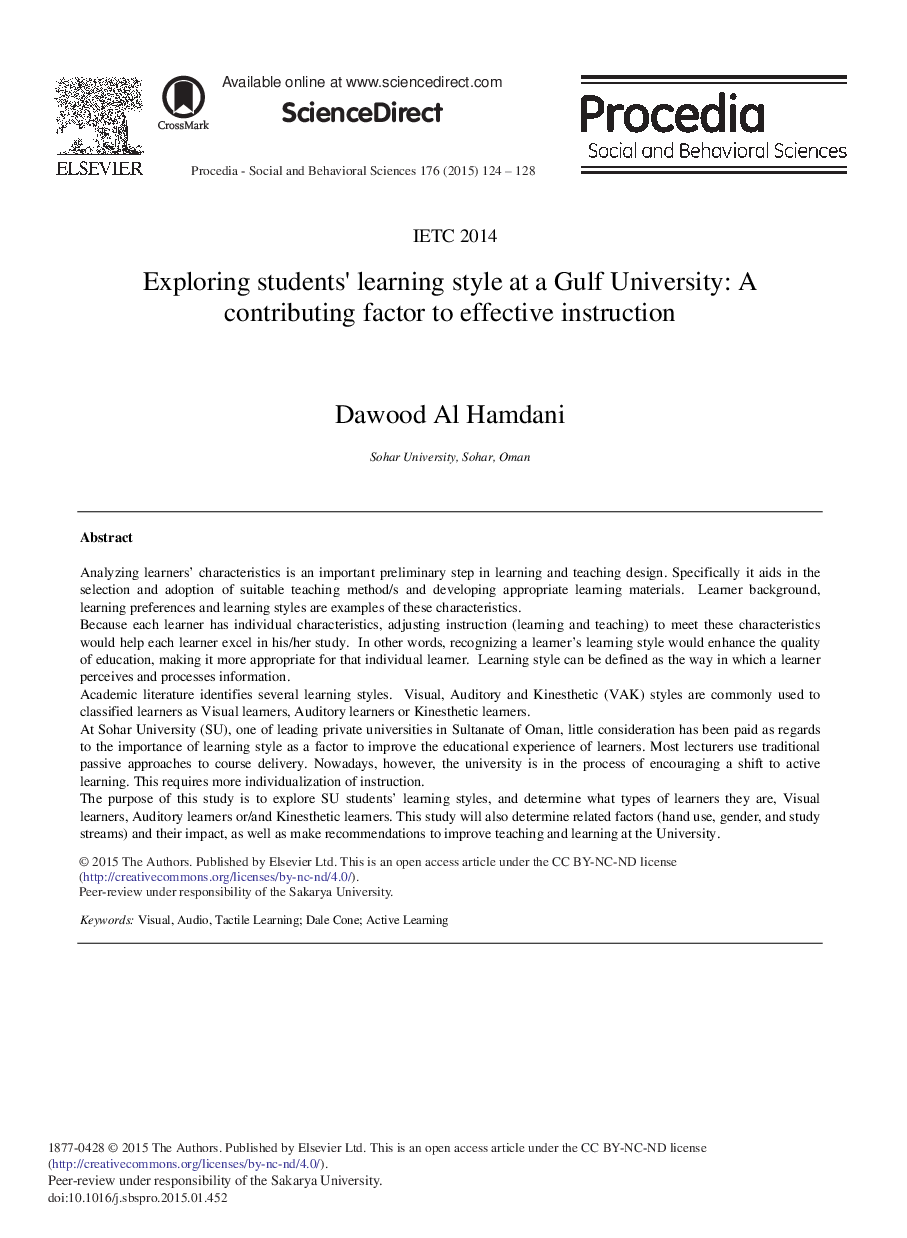| Article ID | Journal | Published Year | Pages | File Type |
|---|---|---|---|---|
| 1110829 | Procedia - Social and Behavioral Sciences | 2015 | 5 Pages |
Analyzing learners’ characteristics is an important preliminary step in learning and teaching design. Specifically it aids in the selection and adoption of suitable teaching method/s and developing appropriate learning materials. Learner background, learning preferences and learning styles are examples of these characteristics.Because each learner has individual characteristics, adjusting instruction (learning and teaching) to meet these characteristics would help each learner excel in his/her study. In other words, recognizing a learner's learning style would enhance the quality of education, making it more appropriate for that individual learner. Learning style can be defined as the way in which a learner perceives and processes information.Academic literature identifies several learning styles. Visual, Auditory and Kinesthetic (VAK) styles are commonly used to classified learners as Visual learners, Auditory learners or Kinesthetic learners.At Sohar University (SU), one of leading private universities in Sultanate of Oman, little consideration has been paid as regards to the importance of learning style as a factor to improve the educational experience of learners. Most lecturers use traditional passive approaches to course delivery. Nowadays, however, the university is in the process of encouraging a shift to active learning. This requires more individualization of instruction.The purpose of this study is to explore SU students’ learning styles, and determine what types of learners they are, Visual learners, Auditory learners or/and Kinesthetic learners. This study will also determine related factors (hand use, gender, and study streams) and their impact, as well as make recommendations to improve teaching and learning at the University.
